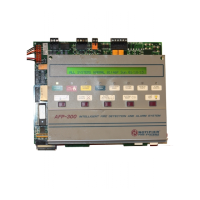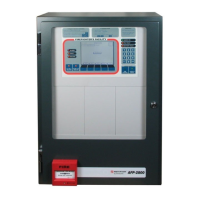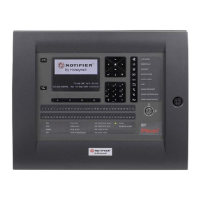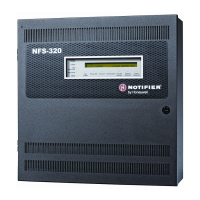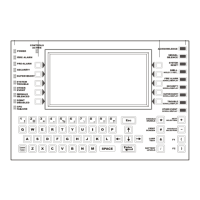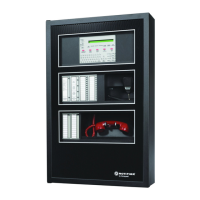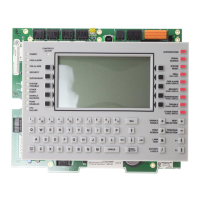31 AFP-3030 Installation Manual — P/N DOC-01-037:B 25/08/2016
Testing the System Battery Checks and Maintenance
Notify fire, central station and/or building personnel when you finish testing the system.
4.2 Battery Checks and Maintenance
Maintenance-free sealed lead-acid batteries used in the system do not require the addition of water
or electrolyte. These batteries are charged and maintained in a fully charged state by the main
power supply's float charger during normal system operation. A discharged battery typically
reaches the float voltage of 27.3 V DC within 24 hours.
Follow the manufacturer recommendations for battery replacement intervals. Minimal replacement
battery capacity appears on the control panel marking label. Immediately replace a leaking or
damaged battery. You can get replacement batteries from the manufacturer.
• If a battery leaks and contact is made with the Sulfuric Acid, immediately flush skin and/or
eyes with water for at least 15 minutes. Water and household baking soda provides a good
neutralizing solution for Sulfuric Acid.
• If Sulfuric Acid gets into eyes, seek immediate medical attention.
• Ensure proper handling of the battery to prevent short circuits.
• Take care to avoid accidental shorting of the leads from uninsulated work benches, tools,
bracelets, rings, and coins.
CAUTION:
The maximum current rating of the batteries is 15 A. The battery connection is fused. If the fuse
needs to be replaced, it must be replaced with a 20A blade fuse.
SLC-meas5.cdr
SLC Out
SLC Return
SLC Return
SLC Out
STEP 2
STEP 3
Step 1. Disconnect the SLC channel B (Out) and SLC channel A (Return) at the control panel.
Step 2. Measure and record the resistance at SLC Out.
Step 3. Measure and record the resistance at SLC Return.
The minimum resistance is the lesser of two and three.
Figure 4.1 Measuring DC Resistance on an Unpopulated SLC Loop
WARNING: BATTERIES CONTAIN SULFURIC ACID,
WHICH CAN CAUSE SEVERE BURNS TO THE SKIN AND EYES AND DAMAGE TO FABRICS.
CAUTION:
SHORTING THE BATTERY LEADS CAN DAMAGE THE BATTERY, EQUIPMENT, AND COULD
CAUSE INJURY TO PERSONNEL.
CAUTION:
RISK OF EXPLOSION IF BATTERY IS REPLACED WITH INCORRECT TYPE.
DISPOSE OF BATTERY ACCORDING TO MANUFACTURER’S INSTRUCTIONS.

